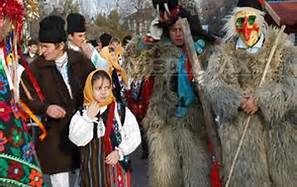A ritual in the Romanian kitchen during the winter months or after long feast nights are sour soups, CIORBA...heart warming, full of flavor and easy to make.
Ingredients:
chicken stock, preferably home made
chicken breast and thigh meat, skinless cut in small pieces
1 onion, chopped
1 stalk of celery, chopped
2 carrots, peeled and chopped
1 parsnip, peeled and chopped
2 eggs
2 tbs sour cream
1/2 cup sauerkraut juice
few pepper corns
chopped fresh flat leaf parsley
chopped fresh dill
chopped fresh basil
dry lovage, a pinch
dry thyme, a pinch
2 tbsp. olive oil
salt and freshly ground black pepper
- In the soup pot sauté the chopped vegetables in olive oil for few minutes until tender and aromatic on medium heat.
- Add the chicken pieces and sear for few minutes more, stirring occasionally.
- Salt and pepper, add the dry herbs and cook for a couple of minutes more stirring the ingredients.
- Add the chicken stock, few pepper corns and simmer slowly for 20-25 minutes.
- Next add the sauerkraut juice and cook for 5 minutes more, tasting for salt and pepper.
- Turn on very low simmer or off, add the fresh herbs and cover until ready to serve.
- In the serving soup bowl, beat the eggs with few drops of water, add a small ladle of hot soup to temper them, mixing gently and follow with the rest of soup.
- Served with a dollop of sour cream and fresh chopped parsley and lovage.
Rustic warmed bread and a bowl of small marinated hot green peppers will accompany the steaming bowls of CIORBA.

Lovage, tall perennial herb (Levisticum officinale) of the family Umbelliferae (parsley family), native to the mountains of Southern Europe.
Its aromatic fruits are used in soups and as a flavoring for confectionery and for some liqueurs.
An aromatic oil extracted from the roots has been used medicinally and also for flavoring.
The edible leaves are usually used like celery.
Voyages of Discovery



















